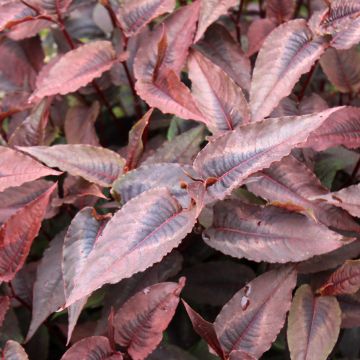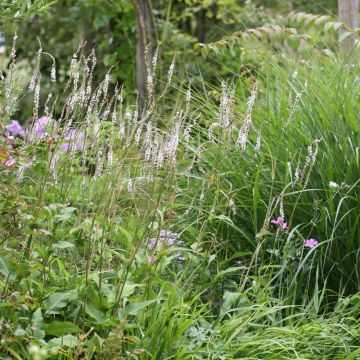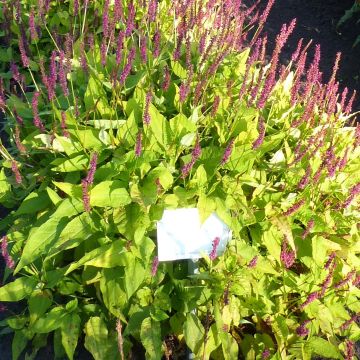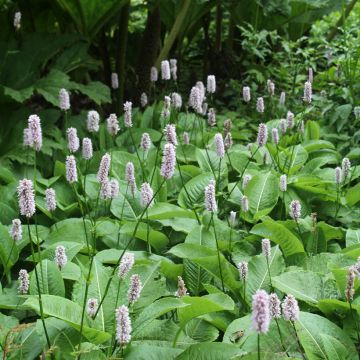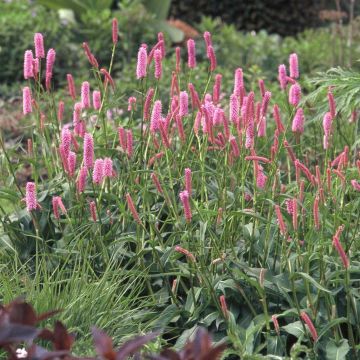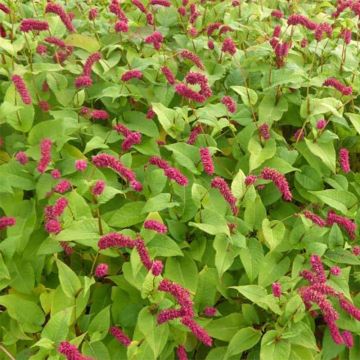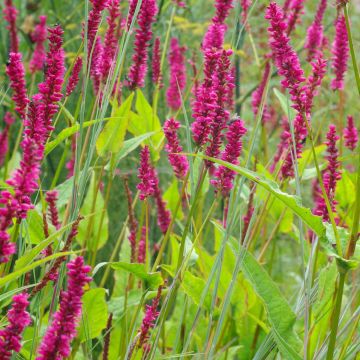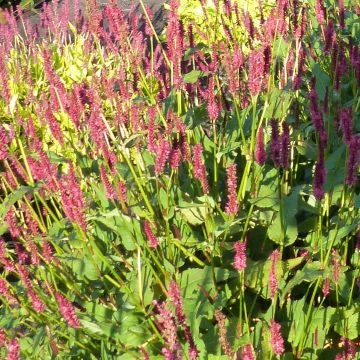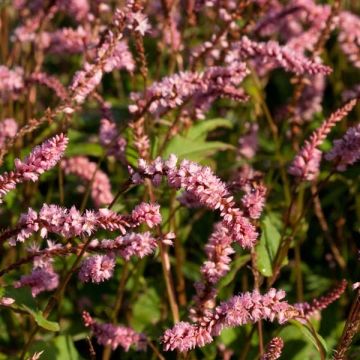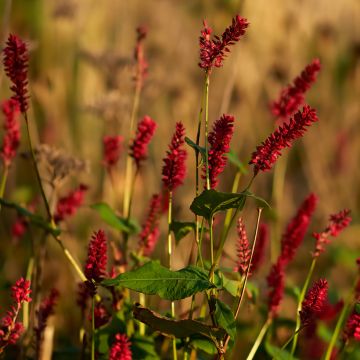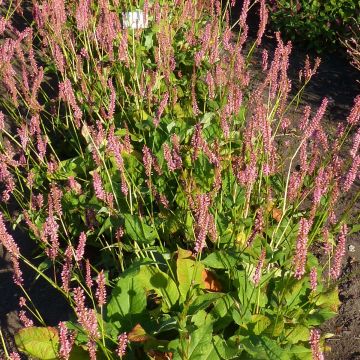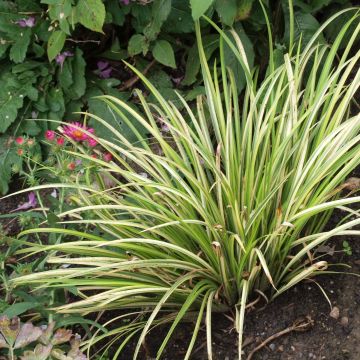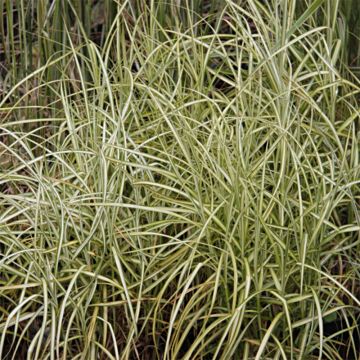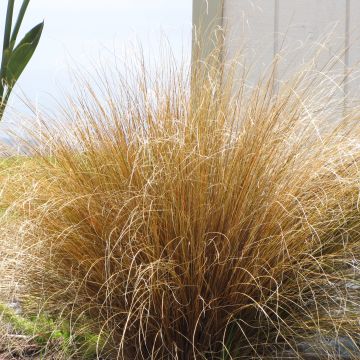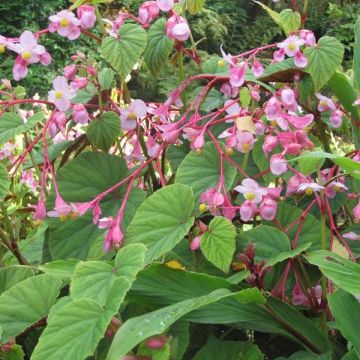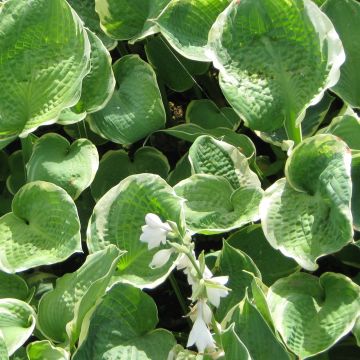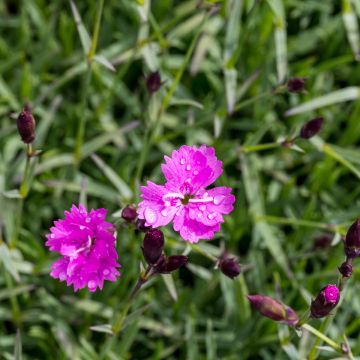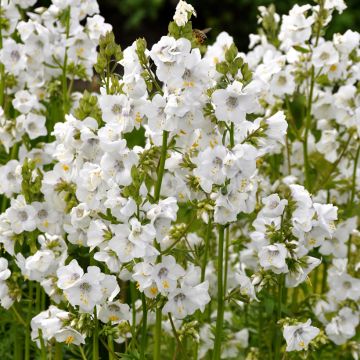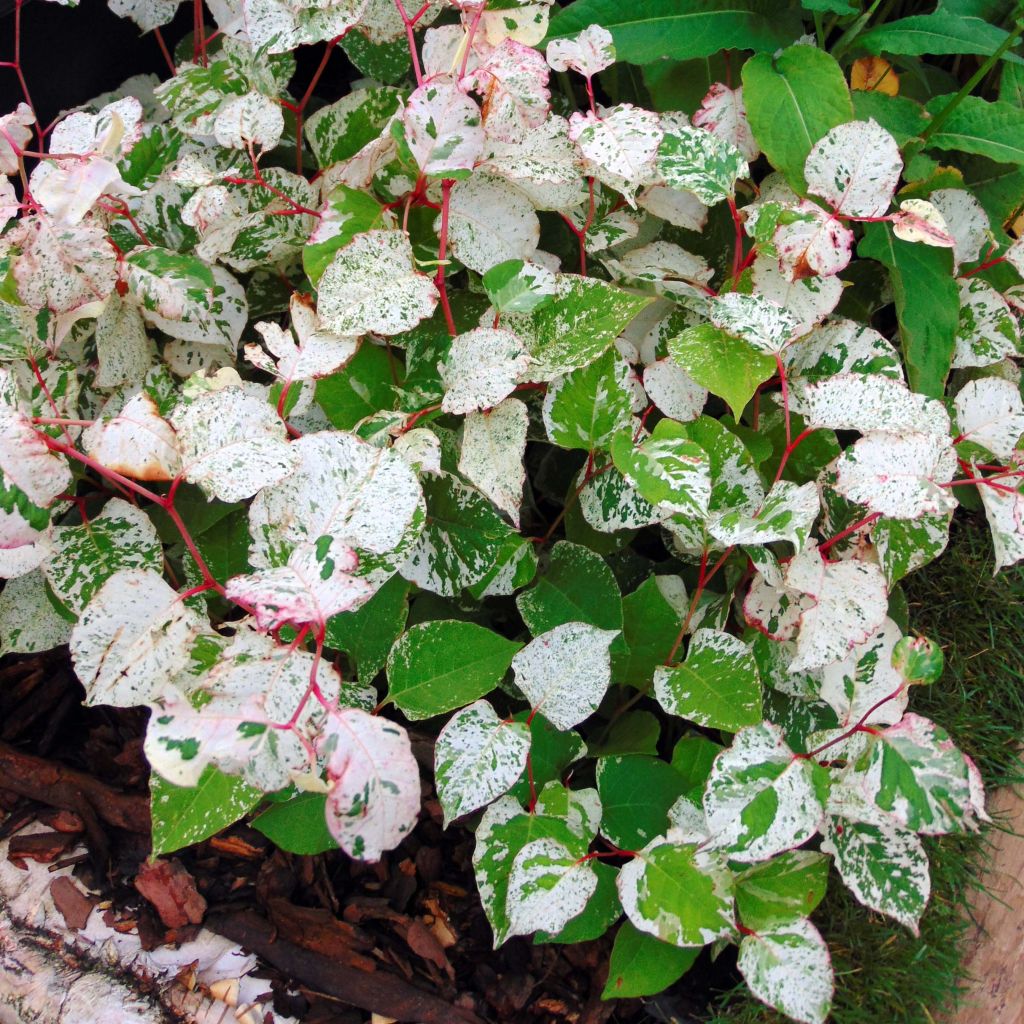

Fallopia japonica Variegata
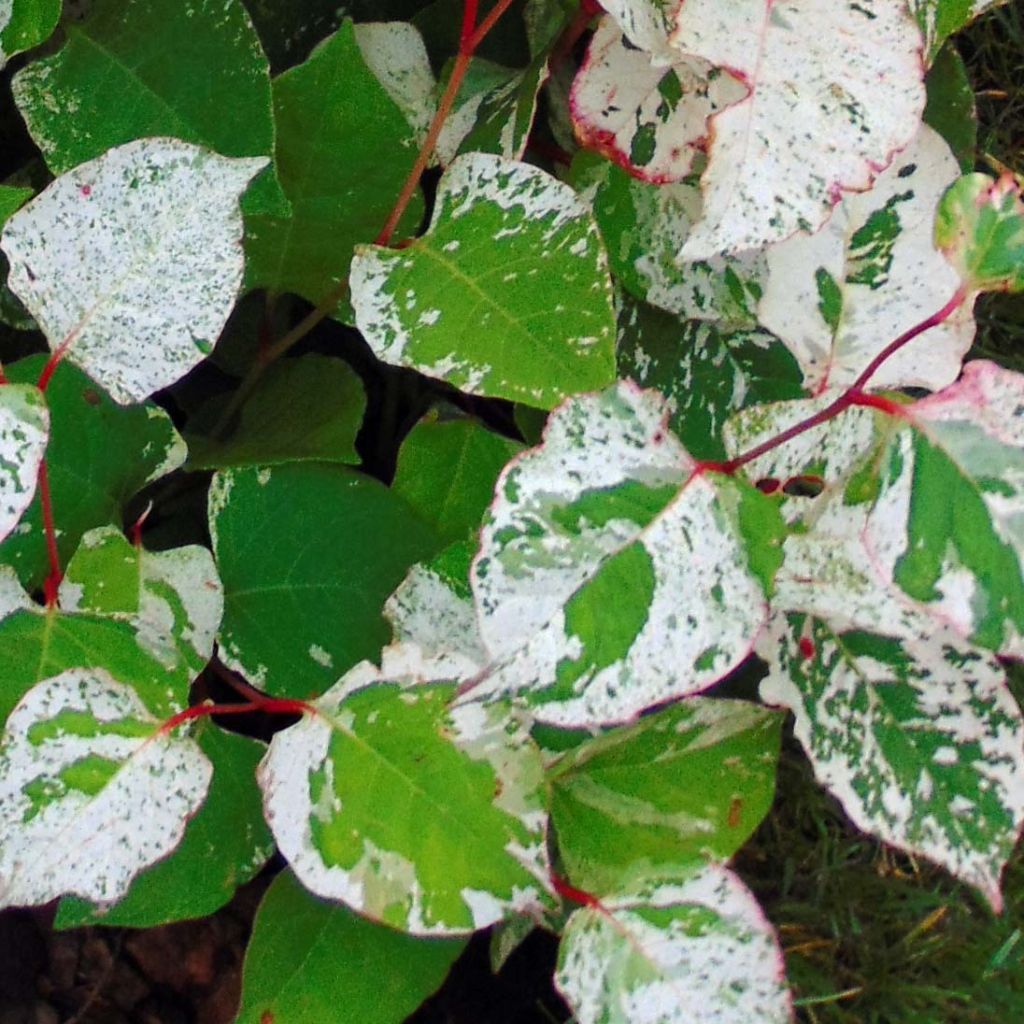

Fallopia japonica Variegata
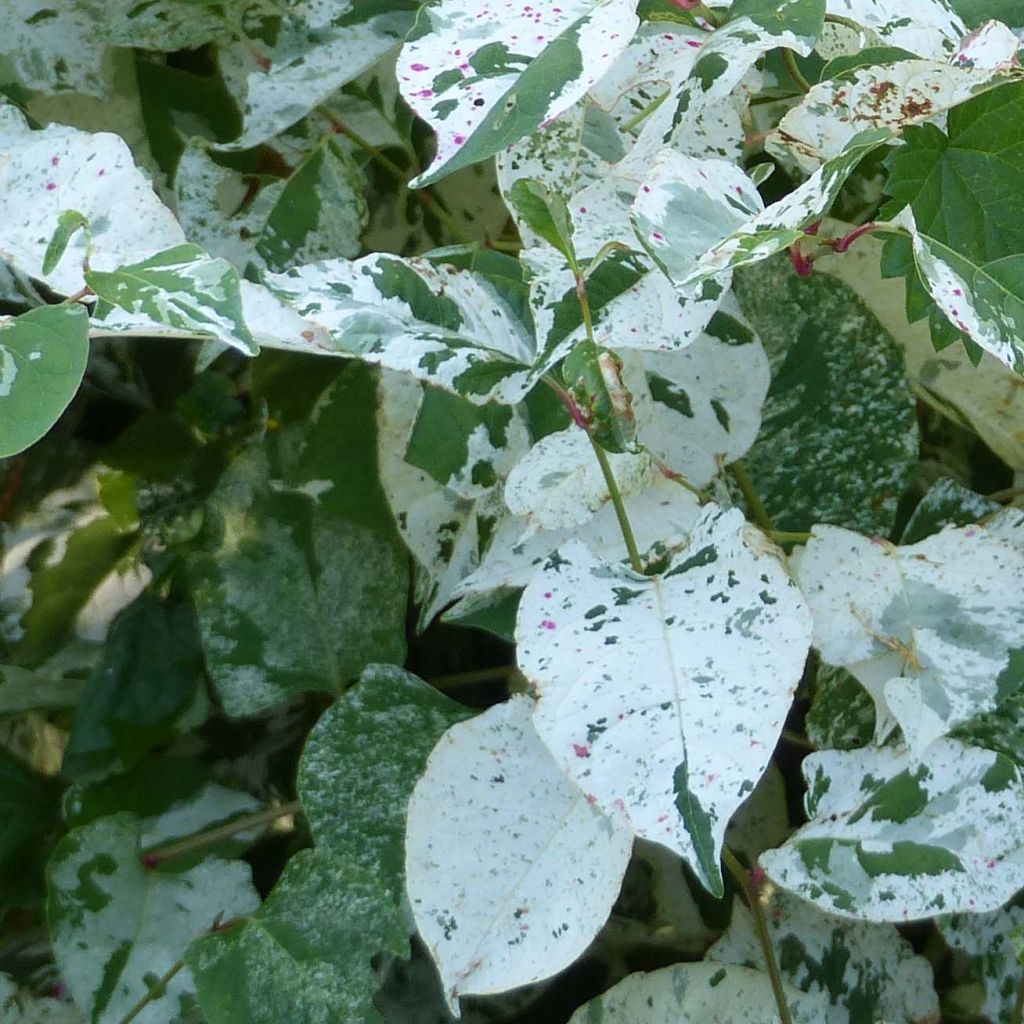

Fallopia japonica Variegata
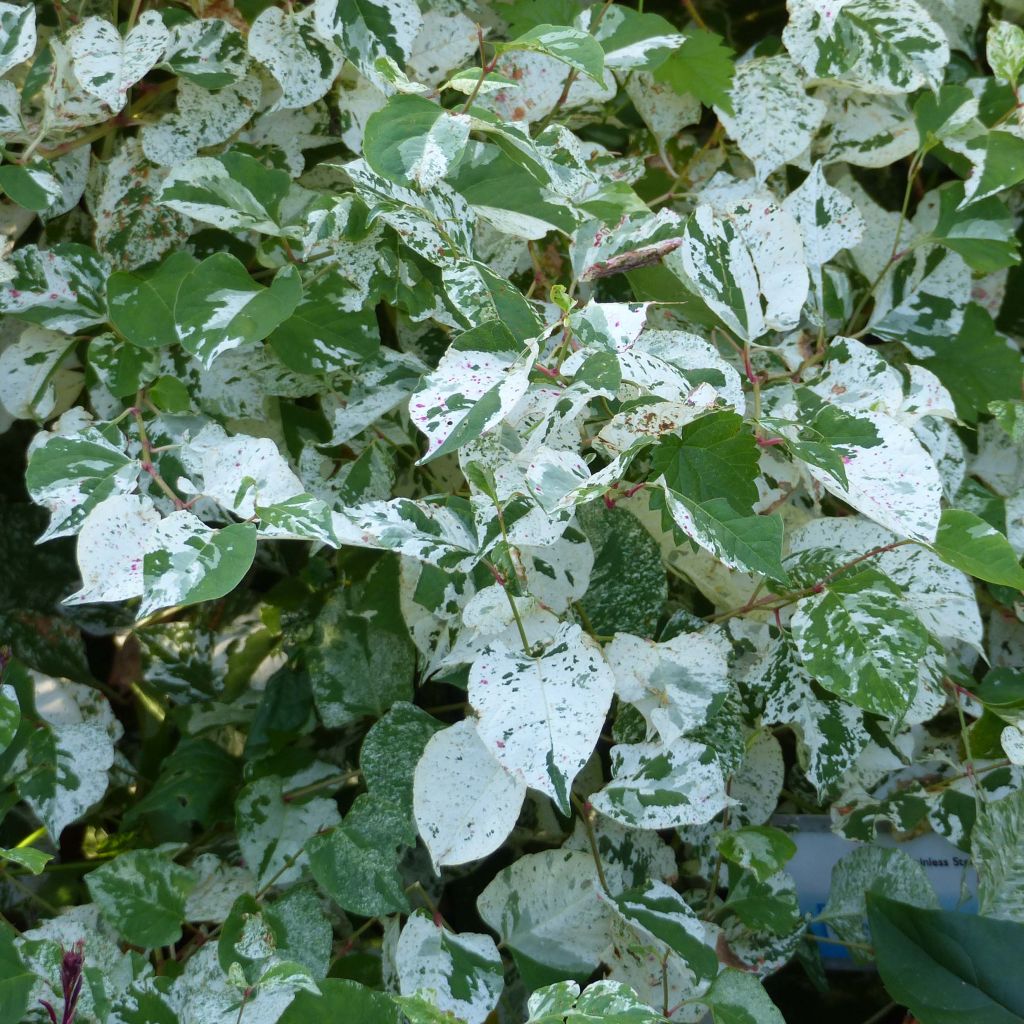

Fallopia japonica Variegata
Fallopia japonica Variegata
Fallopia japonica Variegata
Japanese Knotweed, Asian Knotweed
Thrives well despite the drought and high temperatures. A few leaves have been sunburned but nothing serious.
Claudine P., 26/08/2020
Why not try an alternative variety in stock?
View all →This plant carries a 12 months recovery warranty
More information
We guarantee the quality of our plants for a full growing cycle, and will replace at our expense any plant that fails to recover under normal climatic and planting conditions.
From €5.90 for pickup delivery and €6.90 for home delivery
Express home delivery from €8.90.
Delivery to Corse prohibited: UE law prohibits the import of this plant from mainland France to Corse as part of the fight against Xylella fastidiosa. Please accept our sincere apologies.
More information

Does this plant fit my garden?
Set up your Plantfit profile →
Description
The Fallopia japonica Variegata is a superb representative of the perennial polygonum tribe, known for their vigor, sometimes uncontrollable exuberance, and extremely easy cultivation. This variety, less invasive than the type, stands out for its red stems adorned with wonderfully and randomly variegated leaves in different shades of green and cream-white, sometimes bordered by a purple filament. Its second asset is its slender clusters of sweetly scented white flowers that bloom throughout the summer. Anchored by wandering and particularly resistant rhizomes, this plant quickly forms a vigorous clump, remarkably ornamental in slightly shaded areas of the garden or in a large planter that it will happily take over on the terrace or balcony.
Japanese knotweed is a perennial plant with trailing and woody rhizomes from the polygonaceae family. It is native to the damp undergrowth of eastern Asia, particularly China, Korea, Japan, and Siberia. Classified in France as an invasive plant, it has abundantly naturalized in Europe, in wet environments near swamps and watercourses. Its rhizomes can reach depths of up to 2m (7ft) in search of moisture and remain dormant for several years before finding favorable conditions for above-ground vegetation development. Invasive in wet soil, it is easier to contain in drier soils.
The 'Variegata' cultivar, like many variegated foliage plants, has a more modest growth and less vigour. This variety forms a large spreading and bushy clump within 3 or 4 years, reaching a height of about 1.20m (4ft). Its lateral growth allows it to cover a minimum of 90cm (35in) on the ground. Coral-coloured shoots, variegated with cream-white, emerge from the ground in spring. They quickly elongate into hollow, reddish stems that resemble thin bamboo canes. Once the maximum height is reached, these stems branch out. They are adorned with broadly ovate-triangular leaves, reaching 10 to 15cm (4 to 6in) in length, arranged alternately on the branches. Their variegation is superb, each leaf is different, combining different shades of green with cream-white. Some are almost entirely white, others heavily speckled with spring green, marbled with almond green, streaked with green and cream etc. The plant continuously produces new leaves until summer. The above-ground stems and leaves of Fallopia japonica 'Variegata' die in winter, with only buds persisting underground and at ground level.
The flowering occurs from June to October if faded inflorescences are removed. It appears at the axils of the leaves, in the form of long branched panicles adorned with numerous tiny 5-petaled white flowers. Highly fragrant, they are a good source of nectar for bees. In France, the seeds of Fallopia japonica are rarely fertile: the plant mainly spreads through its rhizomes, as a tiny fragment is capable of regenerating an entire plant.
Hardy in zone 4 (down to -30°C (-22°F)), loving humid and cool atmospheres, and beautiful near water features, Polygonum japonicum Variegatum withstands dry periods in summer once well established. Almost indestructible, it simply goes dormant, waiting for better days and becomes less invasive. It has its place in light woodland, alongside Solomon's seals, hedge honeysuckle (Lonicera xylosteum), or easy-to-grow ferns like lady fern (Athyrium filix-femina). But it also integrates well into a large border, accompanied by botanical roses, Diervillea splendens, or Physocarpus. It is an easy, beautiful perennial that requires some monitoring when planted in the ground. On the terrace or balcony, provide it with a large planter and avoid neighboring plants that it would quickly smother.
Report an error about the product description
Fallopia japonica Variegata in pictures
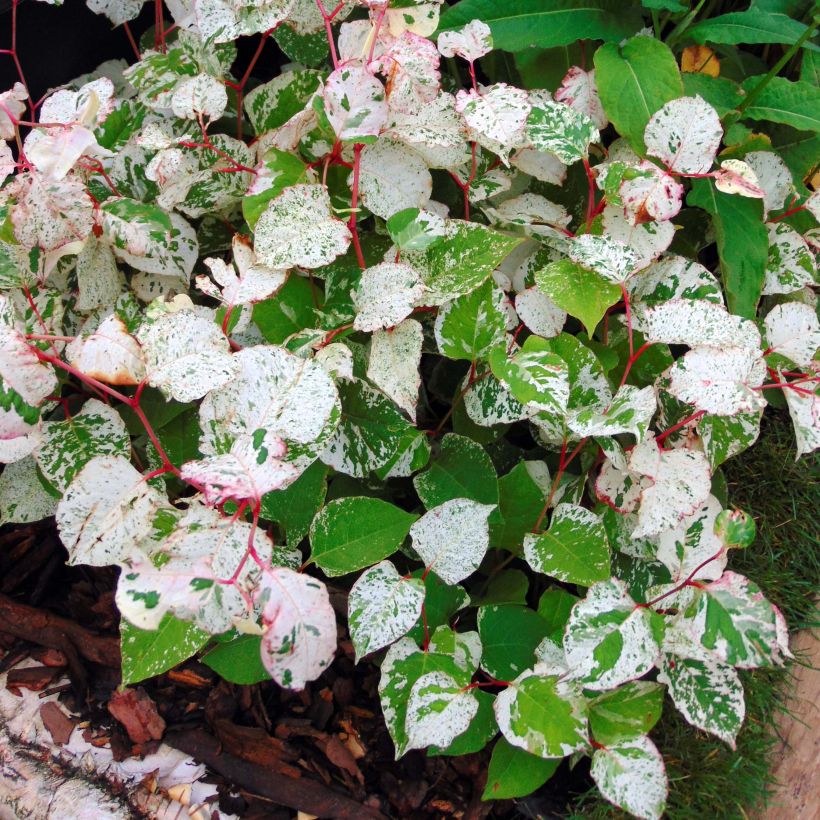

Flowering
Foliage
Plant habit
Botanical data
Fallopia
japonica
Variegata
Polygonaceae
Japanese Knotweed, Asian Knotweed
East Asia
Other Persicaria - Knotweed
Planting and care
Place the Japanese knotweed 'Variegata' in a non-burning sun or in partial shade, in ordinary and fertile soil, deep, even in soil occasionally waterlogged or drier in summer. It does not have any particular requirement regarding the soil pH, accepting soils with a tendency to be calcareous. This plant is perfectly hardy accross Europe and difficult to eliminate once well established. You can place it on the edge of a pond (beware of its invasive nature) or in a flowerbed. Prune the dead stems at the end of winter, when the vegetation starts again, wear gloves to avoid splinters. Limit its spread by removing the too wandering rhizomes on the periphery of the stump. This plant has few enemies in our climates.
Planting period
Intended location
Care
-
, onOrder confirmed
Reply from on Promesse de fleurs
Coloured foliage perennials
Haven't found what you were looking for?
Hardiness is the lowest winter temperature a plant can endure without suffering serious damage or even dying. However, hardiness is affected by location (a sheltered area, such as a patio), protection (winter cover) and soil type (hardiness is improved by well-drained soil).

Photo Sharing Terms & Conditions
In order to encourage gardeners to interact and share their experiences, Promesse de fleurs offers various media enabling content to be uploaded onto its Site - in particular via the ‘Photo sharing’ module.
The User agrees to refrain from:
- Posting any content that is illegal, prejudicial, insulting, racist, inciteful to hatred, revisionist, contrary to public decency, that infringes on privacy or on the privacy rights of third parties, in particular the publicity rights of persons and goods, intellectual property rights, or the right to privacy.
- Submitting content on behalf of a third party;
- Impersonate the identity of a third party and/or publish any personal information about a third party;
In general, the User undertakes to refrain from any unethical behaviour.
All Content (in particular text, comments, files, images, photos, videos, creative works, etc.), which may be subject to property or intellectual property rights, image or other private rights, shall remain the property of the User, subject to the limited rights granted by the terms of the licence granted by Promesse de fleurs as stated below. Users are at liberty to publish or not to publish such Content on the Site, notably via the ‘Photo Sharing’ facility, and accept that this Content shall be made public and freely accessible, notably on the Internet.
Users further acknowledge, undertake to have ,and guarantee that they hold all necessary rights and permissions to publish such material on the Site, in particular with regard to the legislation in force pertaining to any privacy, property, intellectual property, image, or contractual rights, or rights of any other nature. By publishing such Content on the Site, Users acknowledge accepting full liability as publishers of the Content within the meaning of the law, and grant Promesse de fleurs, free of charge, an inclusive, worldwide licence for the said Content for the entire duration of its publication, including all reproduction, representation, up/downloading, displaying, performing, transmission, and storage rights.
Users also grant permission for their name to be linked to the Content and accept that this link may not always be made available.
By engaging in posting material, Users consent to their Content becoming automatically accessible on the Internet, in particular on other sites and/or blogs and/or web pages of the Promesse de fleurs site, including in particular social pages and the Promesse de fleurs catalogue.
Users may secure the removal of entrusted content free of charge by issuing a simple request via our contact form.
The flowering period indicated on our website applies to countries and regions located in USDA zone 8 (France, the United Kingdom, Ireland, the Netherlands, etc.)
It will vary according to where you live:
- In zones 9 to 10 (Italy, Spain, Greece, etc.), flowering will occur about 2 to 4 weeks earlier.
- In zones 6 to 7 (Germany, Poland, Slovenia, and lower mountainous regions), flowering will be delayed by 2 to 3 weeks.
- In zone 5 (Central Europe, Scandinavia), blooming will be delayed by 3 to 5 weeks.
In temperate climates, pruning of spring-flowering shrubs (forsythia, spireas, etc.) should be done just after flowering.
Pruning of summer-flowering shrubs (Indian Lilac, Perovskia, etc.) can be done in winter or spring.
In cold regions as well as with frost-sensitive plants, avoid pruning too early when severe frosts may still occur.
The planting period indicated on our website applies to countries and regions located in USDA zone 8 (France, United Kingdom, Ireland, Netherlands).
It will vary according to where you live:
- In Mediterranean zones (Marseille, Madrid, Milan, etc.), autumn and winter are the best planting periods.
- In continental zones (Strasbourg, Munich, Vienna, etc.), delay planting by 2 to 3 weeks in spring and bring it forward by 2 to 4 weeks in autumn.
- In mountainous regions (the Alps, Pyrenees, Carpathians, etc.), it is best to plant in late spring (May-June) or late summer (August-September).
The harvesting period indicated on our website applies to countries and regions in USDA zone 8 (France, England, Ireland, the Netherlands).
In colder areas (Scandinavia, Poland, Austria...) fruit and vegetable harvests are likely to be delayed by 3-4 weeks.
In warmer areas (Italy, Spain, Greece, etc.), harvesting will probably take place earlier, depending on weather conditions.
The sowing periods indicated on our website apply to countries and regions within USDA Zone 8 (France, UK, Ireland, Netherlands).
In colder areas (Scandinavia, Poland, Austria...), delay any outdoor sowing by 3-4 weeks, or sow under glass.
In warmer climes (Italy, Spain, Greece, etc.), bring outdoor sowing forward by a few weeks.


































